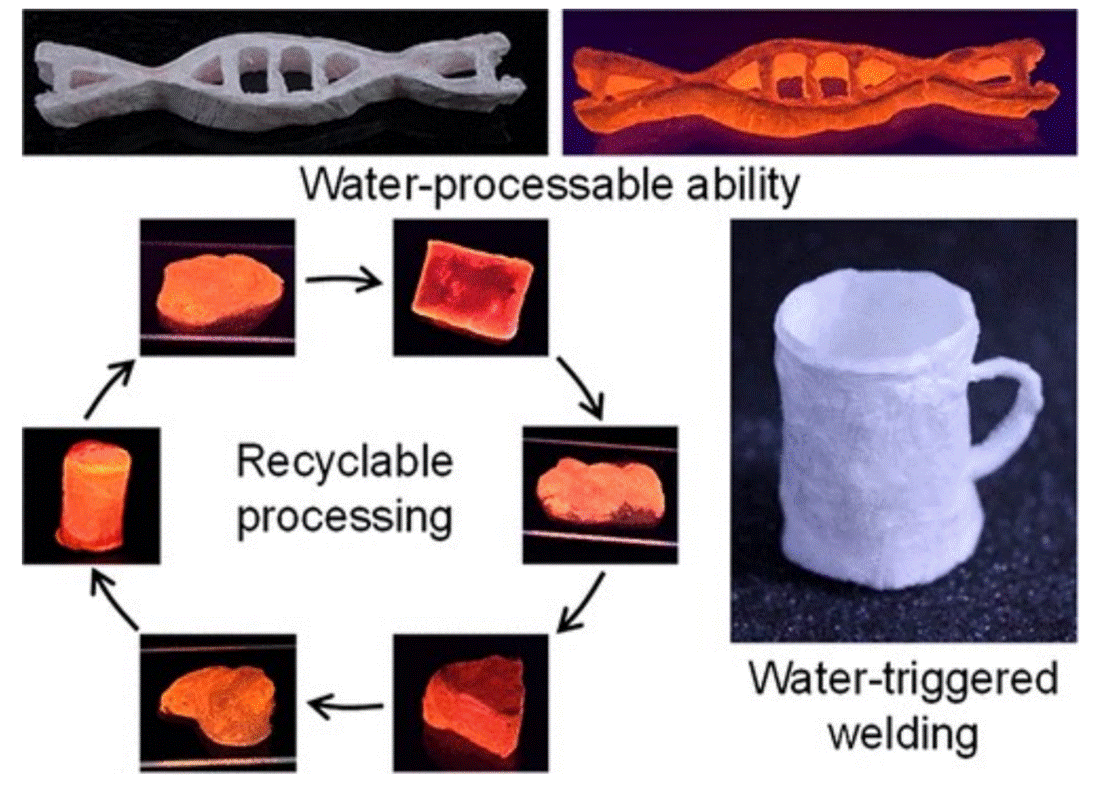Recently, Prof. Yang Dayong’s team succeeded in developing a new type of DNA bioplastic in collaboration with the PetroChina Petrochemical Research Institute. Raw materials for this bioplastic can be got from many sources, and the production, use and recycling of it are all eco-friendly. In addition, this bioplastic can be fully recycled with low energy consumption, so it is expected to replace petroleum-based plastic in some application fields. The research results have been published in Journal of the American Chemical Society, a preeminent journal in all of chemistry and interfacing areas of science.

The plastic industry is a pillar industry of China’s national economy. The country ranks first in both the output and consumption of plastic products, with around one-third of its imported petroleum being used to synthesize such products. The extraction of raw materials for plastic is caused by high energy consumption, heavy pollution and massive emission of greenhouse gases and chemical by-products. At present, plastic waste produced by the world amounts to tens of millions of tons, and this figure is continuously growing at an incredible rate. It is a huge waste of non-renewable resources to discard large amounts of petroleum-based plastic, which will greatly aggravate the energy crisis. Developing recyclable bio-based plastic has become an effective measure to fight against plastic pollution and reduce carbon emissions. In particular, developing eco-friendly materials has become a frontier research focus in the academic and industrial community.
DNA (deoxyribonucleic acid), a chemical that carries genetic information, is widespread in nature. It is an inexhaustible biopolymer. It is estimated that the world's total reserves of DNA reach 50 billion metric tons. If a small portion of these reserves are converted into DNA plastic, theoretically the growing demand for plastic can be met to a great extent.
Based on this fact, Prof. Yang's team develops a new method to process DNA bioplastic at a low temperature, producing a new type of DNA bioplastic that is compatible with the environment in the process of production, use and recycling. The raw materials for this bioplastic include native DNA and ionomer, both of which come from biological renewables. Compared with petroleum-based plastic which is processed through fusion, the energy consumption of processing this DNA plastic is less than five percent. In addition, this novel bioplastic can be fully recycled to produce new plastic products, and its controlled degradation can be realized through the enzyme action of DNA.
This new type of DNA plastic has great potential for mass production. According to Prof. Yang, a large amount of biomass DNA can be quickly extracted from plants, algae and bacteria by using existing industrial equipment, which can serve to produce about hundreds of thousands of of DNA every year. This bioplastic is easy to fold and remains stable at a low temperature. It can be processed into a multi-chamber microstructure and is expected to play a significant role in biosensing, drug delivery, tissue engineering and many other biomedical fields.
By Lin Nan
Editors: Qin Mian & Yang Fan






